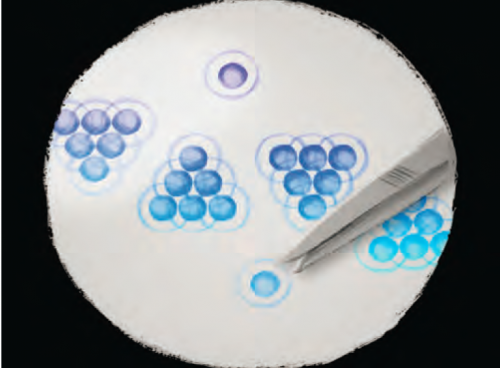Conventional methods have allowed organic chemists to make many molecules with complex three-dimensional structures, but one particular triangle-shaped molecule called triangulene has presented some difficulty. Its instability has prevented previous chemists from isolating it, but a research team at IBM has recently synthesized this elusive molecule. Its successful synthesis could mark an interesting development in the quantum age of technology, as this new technique for chemical synthesis has many potential applications.
In traditional chemical synthesis, chemists follow a synthetic pathway, or a series of sequential steps such as mixing or heating chemicals, to carry out chemical reactions and transform the original reactants into a desired product. All attempts made so far to synthesize triangulene—whose triangle-shape consists of six attached rings, each made of six-carbons, with two unpaired electrons on the middle rings—have been unsuccessful. This is because these unpaired electrons are extremely reactive, and any triangulene molecule produced from a conventional synthetic pathway is ephemeral—it usually isn’t sufficiently stable to exist long enough for practical use. The bulk of the practical value of triangulene comes from the very same properties that make it so unstable: its two unpaired electrons give it potential for use in quantum technologies, which have yet to be explored.
The team at IBM decided to put the traditional method on the back-burner and opted instead for a new technique: atomic manipulation. In atomic manipulation, a scanning probe microscope or other extremely fine instrument is used to physically manipulate atoms or molecules and to change their chemical structure manually, without the use of conventional chemical reactions.
To produce the molecule, the team at IBM first obtained a sample of dihydrotriangulene, a molecule that looks identical to triangulene except it lacks unpaired electrons, which are instead replaced with hydrogen atoms. They then added this molecule to the surfaces of three solids: sodium chloride, copper, and xenon. Adhering dihydrotriangulene to these surfaces provided structural stability to the molecule and therefore improved the accuracy of the next step, in which the team placed the needle of the scanning probe microscope above two hydrogen atoms and delivered pulses of electricity to separate them from dihydrotriangulene, leaving an electron behind. The result was triangulene, characterized by its two unpaired electrons on two sides of the carbon “triangle.”
The team is undoubtedly excited about their first-ever synthesis of triangulene. Lead researcher Leo Gross told Nature reporter Philip Ball, “Triangulene is the first molecule that we’ve made that chemists have tried hard, and failed, to make already.”
This synthesis of triangulene may have practical applications in the realm of electronics and quantum technologies, including quantum computers, sensors, and data transmitters. The research in this field is ongoing and promising, and it suggests that this new kind of technology will be able to store more memory and compute mathematical calculations with greater speed than its classical counterparts.
The challenges that researchers have faced in synthesizing triangulene are also what makes it most promising for quantum technologies. Triangulene’s unpaired electrons have a fundamental quantum property called spin, which is very relevant for modern spintronics, which uses electron spins for managing memory. Because the spins of the two unpaired electrons are aligned, they can be manipulated to store information in a more efficient manner. Not only can this improve modern electronics, such as hard drive read heads, but it may also unlock new fields within quantum computation.
Especially promising is the fact that the team’s research suggests that triangulene, even with its unpaired electrons, is relatively unreactive on solid copper. This is positive news for triangulene’s practicality, as copper is a valuable constituent of many electronic technologies; if the two were reactive, it would be extremely challenging to incorporate triangulene into quantum technology that also has copper.
Perhaps more far-reaching and important than triangulene itself is its method of synthesis. The work of this IBM team shows that atomic manipulation can indeed be used to work around the limitations of conventional chemical synthesis and produce synthetic targets that are not able to be produced otherwise.
This new method of synthesis, and the end-product molecule itself, are good signs for the future of technology—especially as the world makes the leap from classical to quantum.
Art by Sida Tang

